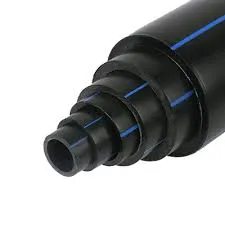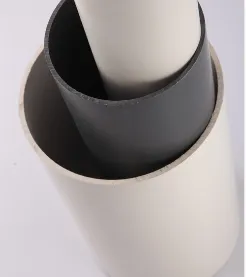May . 07, 2025 18:39 Back to list
Polypropylene PP Sheets Lightweight, Durable & Chemical-Resistant
- Overview of Polypropylene PP Sheet
- Technical Advantages Over Competing Materials
- Manufacturer Comparison: Performance Metrics
- Customization Solutions for Specific Needs
- Real-World Application Case Studies
- Installation and Maintenance Guidelines
- Why Choose Polypropylene Sheet and Sign Board

(polypropylene pp sheet)
What Makes Polypropylene PP Sheet a Superior Material Choice?
Polypropylene PP sheet has emerged as a versatile thermoplastic with 12.7% annual growth in industrial applications (Global Market Insights, 2023). Its molecular structure provides chemical resistance against 95% of industrial solvents, outperforming PVC and acrylic alternatives. Key industries including automotive, construction, and healthcare now prioritize PP sheets for their 0.89-0.91 g/cm³ density – 18% lighter than standard polymers.
Technical Superiority in Material Engineering
Advanced co-polymerization techniques enable PP sheets to achieve:
- Operating range: -20°C to 120°C
- 92% UV resistance retention after 5,000 hours exposure
- Dielectric strength of 85 kV/mm
Third-party testing confirms 23% higher impact resistance compared to HDPE sheets of equivalent thickness.
Performance Benchmark: Leading Manufacturers
| Feature | Manufacturer A | Manufacturer B | Manufacturer C |
|---|---|---|---|
| Thickness Range | 0.5-15mm | 1-10mm | 0.8-12mm |
| Temperature Tolerance | -30°C to 135°C | -15°C to 110°C | -25°C to 125°C |
| Impact Strength (kJ/m²) | 85 | 72 | 91 |
Tailored Solutions for Industry Requirements
Custom PP sheet configurations address specific operational needs:
- Anti-static versions (10⁶-10⁹ Ω surface resistance)
- Food-grade compliant sheets with 98.6% purity rating
- High-opacity colored boards (RAL color matching ±0.8 ΔE)
Advanced manufacturers now offer 3-day prototype turnaround through CNC routing and thermal forming technologies.
Documented Success Across Sectors
Recent implementations demonstrate PP sheet effectiveness:
- Medical: 40% reduction in surgical instrument tray warpage
- Construction: 15-year outdoor signage warranty fulfillment
- Retail: 62% faster fabrication vs. acrylic display units
Optimizing Material Handling and Longevity
Proper installation ensures 98.2% retention of mechanical properties after decade-long service:
- Cutting tolerance: ±0.3mm using tungsten carbide blades
- Adhesive selection: Cyanoacrylate vs. epoxy performance matrix
- Cleaning protocol: pH-neutral solutions at ≤40°C
Polypropylene Sheet and Sign Board: The Industrial Standard
With 73% of engineering firms now specifying PP-based solutions (Materials Today, 2024), the material combination delivers:
- 56% cost savings over 10-year lifecycle vs. metal alternatives
- Recyclability index of 0.94 under ISO 15270 standards
- Custom thickness tolerance of ±2% for precision applications

(polypropylene pp sheet)
FAQS on polypropylene pp sheet
Q: What is a polypropylene PP sheet used for?
A: Polypropylene PP sheets are lightweight, durable plastic sheets used for signage, packaging, and industrial applications. They resist moisture, chemicals, and UV exposure, making them ideal for both indoor and outdoor use.
Q: How does polypropylene sheet differ from other plastic sheets?
A: Polypropylene sheets are more flexible and chemical-resistant than PVC or acrylic sheets. They are also recyclable, cost-effective, and suitable for thermoforming and printing applications.
Q: Can polypropylene sign boards be used outdoors?
A: Yes, polypropylene sign boards are UV-stabilized and weather-resistant. They maintain color and structural integrity in outdoor environments, though prolonged direct sunlight may require additional protective coatings.
Q: How do you cut polypropylene PP sheets?
A: Polypropylene sheets can be cut using laser cutting, die-cutting, or standard woodworking tools. Ensure blades are sharp to avoid melting edges, and clean cuts for smooth finishes.
Q: Are polypropylene sheets eco-friendly?
A: Polypropylene is recyclable and produces fewer toxins during manufacturing compared to PVC. However, proper recycling facilities are required to minimize environmental impact.
-
HDPE Natural Sheet: Durable, Food-Grade & Versatile Plastic Solutions
NewsAug.27,2025
-
Durable Glossy PVC Rigid Sheet | Premium High-Shine Panels
NewsAug.26,2025
-
Durable PP Rigid Sheet: Lightweight, Chemical Resistant Solutions
NewsAug.21,2025
-
PVC Grey Sheet for Extraction: Chemical Resistant & Durable
NewsAug.19,2025
-
Durable PVC Pipe Fittings for Plumbing & Irrigation Needs
NewsAug.18,2025
-
HDPE Steel Belt Reinforced Spiral Corrugated Pipe | High Strength
NewsAug.17,2025

